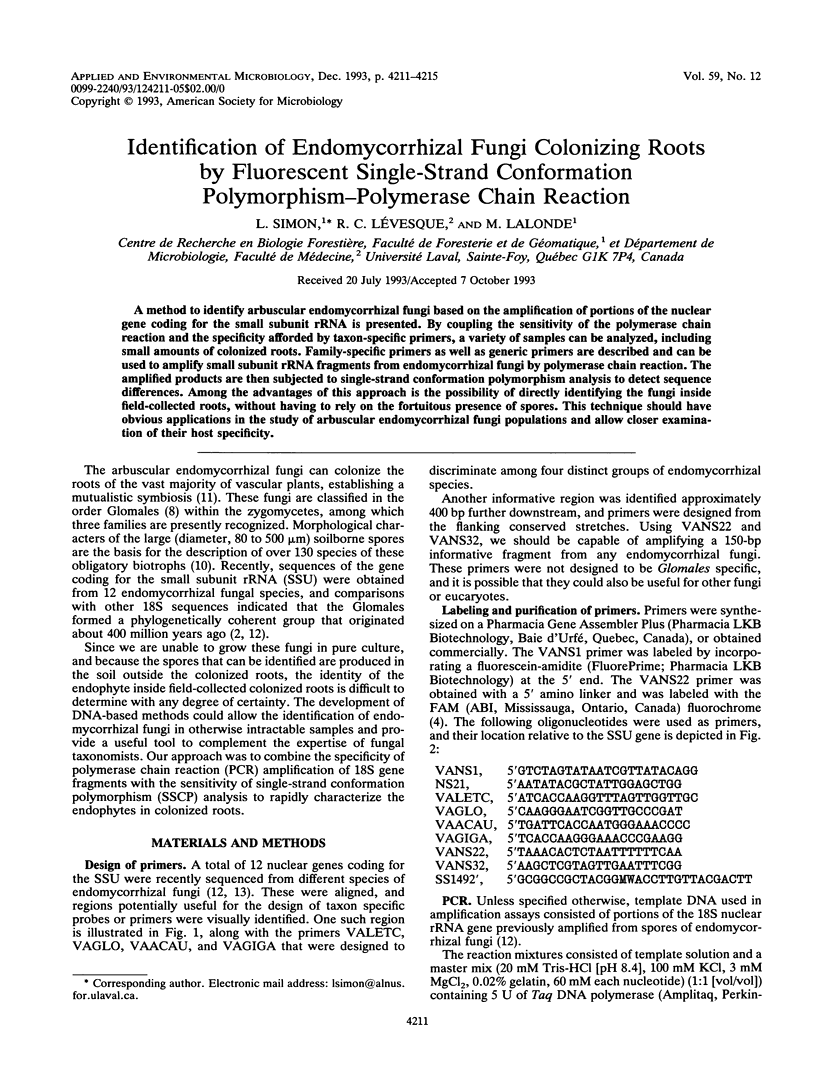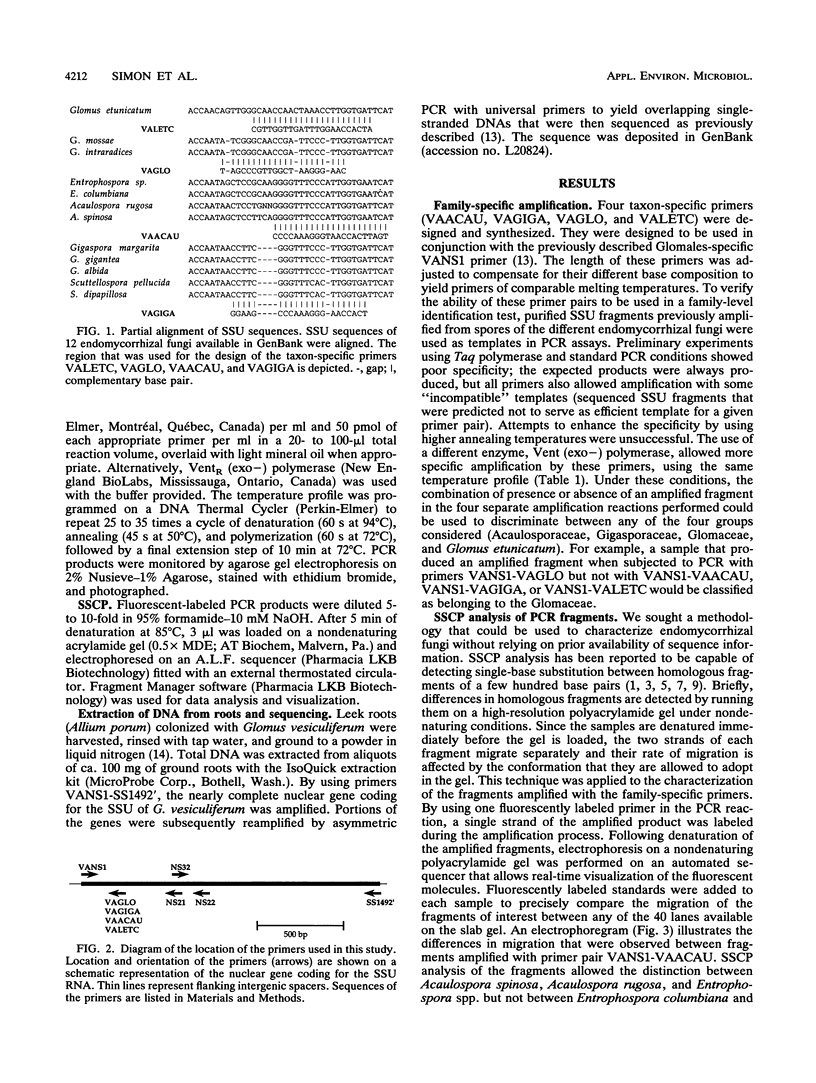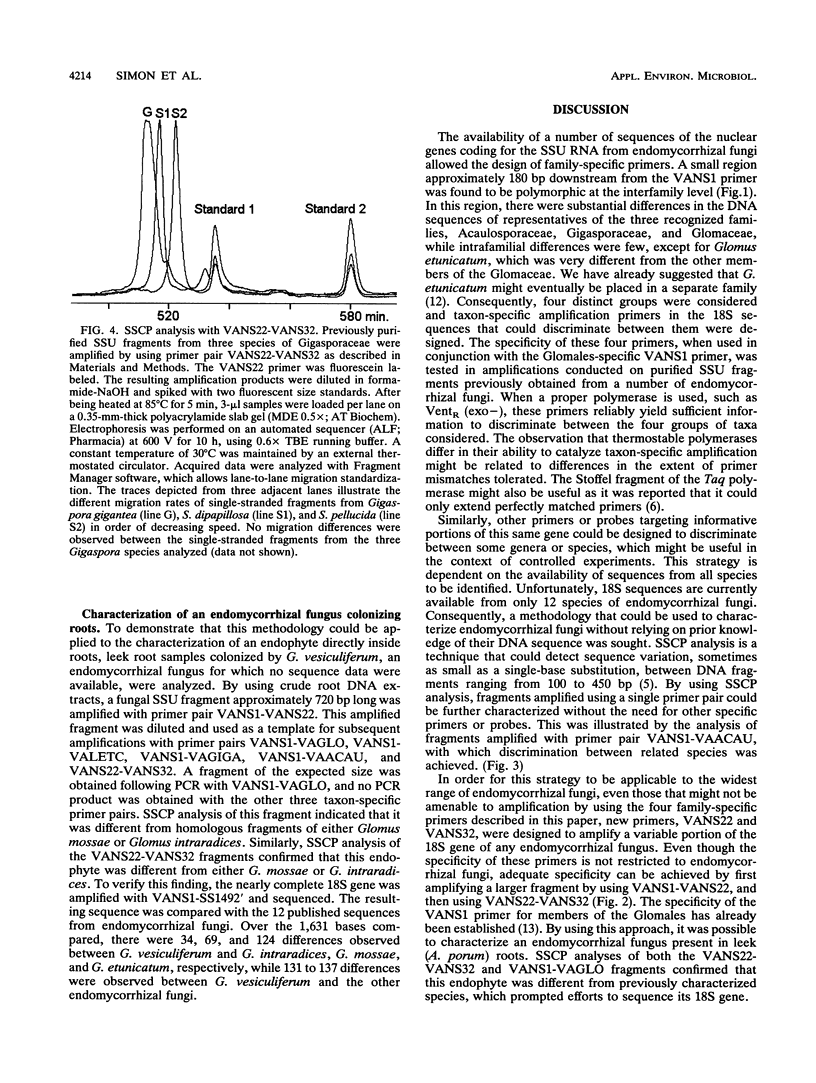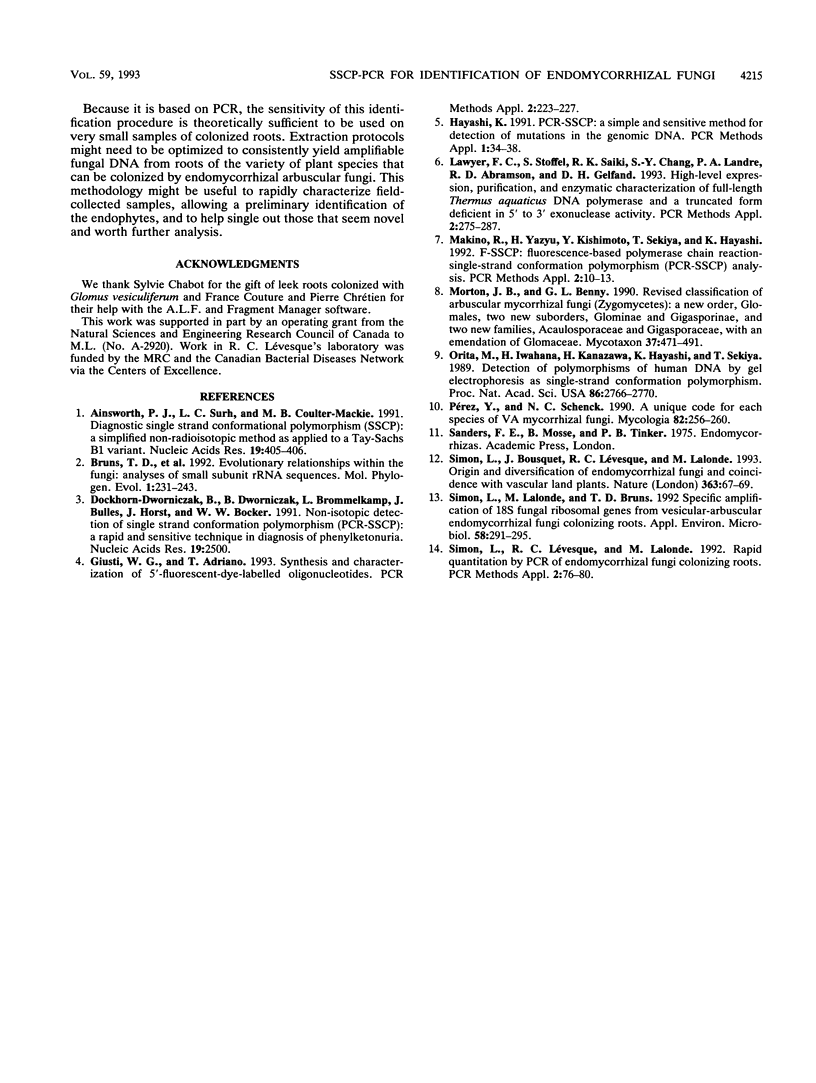Abstract
A method to identify arbuscular endomycorrhizal fungi based on the amplification of portions of the nuclear gene coding for the small subunit rRNA is presented. By coupling the sensitivity of the polymerase chain reaction and the specificity afforded by taxon-specific primers, a variety of samples can be analyzed, including small amounts of colonized roots. Family-specific primers as well as generic primers are described and can be used to amplify small subunit rRNA fragments from endomycorrhizal fungi by polymerase chain reaction. The amplified products are then subjected to single-strand conformation polymorphism analysis to detect sequence differences. Among the advantages of this approach is the possibility of directly identifying the fungi inside field-collected roots, without having to rely on the fortuitous presence of spores. This technique should have obvious applications in the study of arbuscular endomycorrhizal fungi populations and allow closer examination of their host specificity.
Full text
PDF




Selected References
These references are in PubMed. This may not be the complete list of references from this article.
- Ainsworth P. J., Surh L. C., Coulter-Mackie M. B. Diagnostic single strand conformational polymorphism, (SSCP): a simplified non-radioisotopic method as applied to a Tay-Sachs B1 variant. Nucleic Acids Res. 1991 Jan 25;19(2):405–406. doi: 10.1093/nar/19.2.405. [DOI] [PMC free article] [PubMed] [Google Scholar]
- Dockhorn-Dworniczak B., Dworniczak B., Brömmelkamp L., Bülles J., Horst J., Böcker W. W. Non-isotopic detection of single strand conformation polymorphism (PCR-SSCP): a rapid and sensitive technique in diagnosis of phenylketonuria. Nucleic Acids Res. 1991 May 11;19(9):2500–2500. doi: 10.1093/nar/19.9.2500. [DOI] [PMC free article] [PubMed] [Google Scholar]
- Giusti W. G., Adriano T. Synthesis and characterization of 5'-fluorescent-dye-labeled oligonucleotides. PCR Methods Appl. 1993 Feb;2(3):223–227. doi: 10.1101/gr.2.3.223. [DOI] [PubMed] [Google Scholar]
- Hayashi K. PCR-SSCP: a simple and sensitive method for detection of mutations in the genomic DNA. PCR Methods Appl. 1991 Aug;1(1):34–38. doi: 10.1101/gr.1.1.34. [DOI] [PubMed] [Google Scholar]
- Lawyer F. C., Stoffel S., Saiki R. K., Chang S. Y., Landre P. A., Abramson R. D., Gelfand D. H. High-level expression, purification, and enzymatic characterization of full-length Thermus aquaticus DNA polymerase and a truncated form deficient in 5' to 3' exonuclease activity. PCR Methods Appl. 1993 May;2(4):275–287. doi: 10.1101/gr.2.4.275. [DOI] [PubMed] [Google Scholar]
- Makino R., Yazyu H., Kishimoto Y., Sekiya T., Hayashi K. F-SSCP: fluorescence-based polymerase chain reaction-single-strand conformation polymorphism (PCR-SSCP) analysis. PCR Methods Appl. 1992 Aug;2(1):10–13. doi: 10.1101/gr.2.1.10. [DOI] [PubMed] [Google Scholar]
- Orita M., Iwahana H., Kanazawa H., Hayashi K., Sekiya T. Detection of polymorphisms of human DNA by gel electrophoresis as single-strand conformation polymorphisms. Proc Natl Acad Sci U S A. 1989 Apr;86(8):2766–2770. doi: 10.1073/pnas.86.8.2766. [DOI] [PMC free article] [PubMed] [Google Scholar]
- Simon L., Lalonde M., Bruns T. D. Specific amplification of 18S fungal ribosomal genes from vesicular-arbuscular endomycorrhizal fungi colonizing roots. Appl Environ Microbiol. 1992 Jan;58(1):291–295. doi: 10.1128/aem.58.1.291-295.1992. [DOI] [PMC free article] [PubMed] [Google Scholar]
- Simon L., Lévesque R. C., Lalonde M. Rapid quantitation by PCR of endomycorrhizal fungi colonizing roots. PCR Methods Appl. 1992 Aug;2(1):76–80. doi: 10.1101/gr.2.1.76. [DOI] [PubMed] [Google Scholar]


